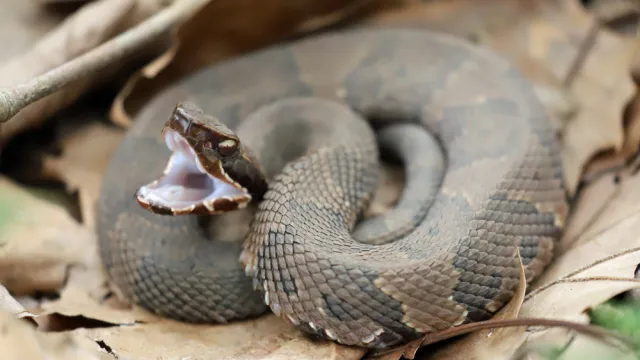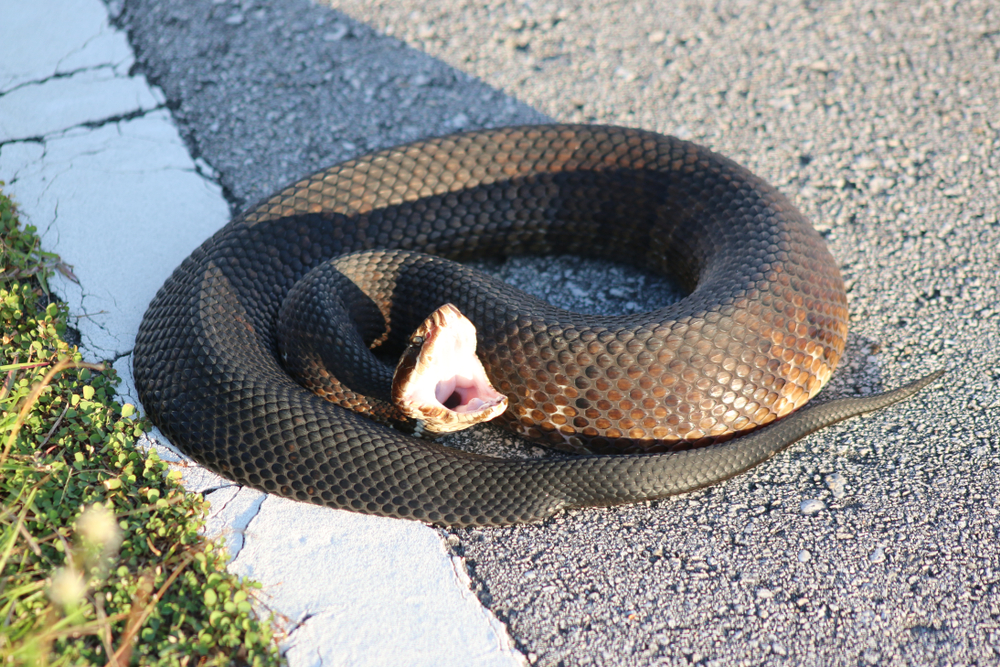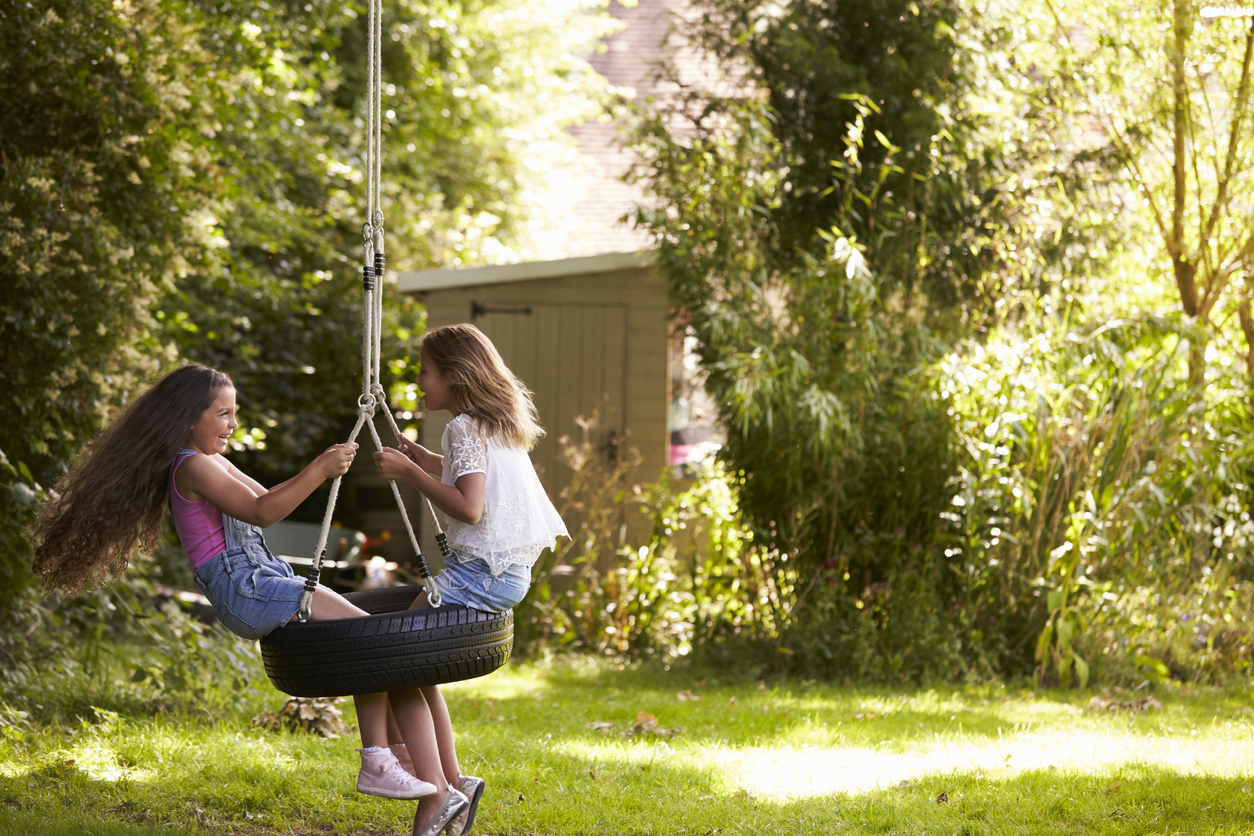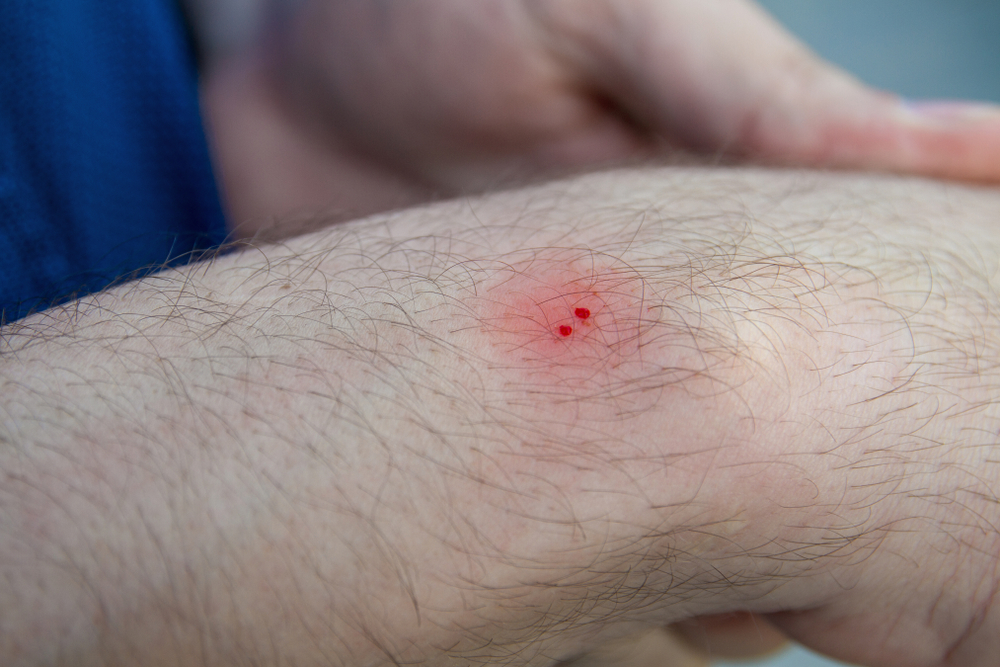A Venomous Snake Bit a 7-Year-Old at His Home—Here’s Where It Was Hiding

For most people, a poisonous snake is likely near the top of the list of things you wouldn’t want to come across at home. Homeowners can go to great lengths to troubleshoot and make their properties less enticing to the reptiles by avoiding certain lawn materials and yard decorations. But as long as we inhabit the same space as these creatures, there’s no way to guarantee you won’t see one at some point. Unfortunately, one recent encounter ended with a 7-year-old child in the hospital after a notorious type of venomous snake bit him while at home. Read on to see how the child ended up in harm’s way and where the snake was hiding.
READ THIS NEXT: The No. 1 Sign There’s a Snake in Your Yard, Experts Say.
The young boy was bitten by a relatively common type of poisonous snake.

On June 3, 7-year-old Elijah Bustamante was bitten by a venomous snake at his home in Green Cove Springs, Florida, local Jacksonville CBS affiliate WJAX reports. While the animal was never captured, doctors say the boy could identify the snake as a water moccasin after they showed him pictures of different species on their phones, News4Jax reports, per Newsweek.
According to Live Science, water moccasins are a type of pit viper that lives in a habitat stretching from southeastern Virginia to Florida, over to west-central Texas, and up to southern Illinois and Indiana. As semi-aquatic animals, they’re the only poisonous snake in the U.S. that spends a decent amount of time in the water and on land. The snake can be identified from other similar-looking non-venomous varieties of snake by its pupils—which are vertical rather than round—and its broad, blocky head in relation to its body. But another unique characteristic helped earn its name.
“When a cottonmouth feels threatened, it will coil its body and open its mouth wide to expose the white coloration of the inside of its mouth,” Sara Viernum, a herpetologist based in Portland, Oregon, told Live Science, which serves as a stark contrast against its dark body. “Exposing the white of the mouth serves as a warning signal to potential predators.”
The hiding snake bit the boy while he was playing at home.

As with many snake encounters, the young boy’s brush with the poisonous reptile resulted from not realizing the animal was nearby. “Elijah was outside in the backyard with my brother, and he was playing. He bent over to pick up a rock near a bush, and he said the snake jumped out and bit him on his knee,” Sanita Bustamante, Elijah’s mother, told Jacksonville CBS affiliate WJAX.
Elijah was rushed to the hospital after being bitten, at which point his mother says he was shaking uncontrollably. “He had seven bags of antivenom. He had to get a feeding tube. He didn’t eat for four days,” she told News4Jax.
Fortunately, Elijah responded well to medical treatment and was released from the hospital. And despite still reporting some pain and using a wheelchair for the time being, he remained in high spirits, telling WJAX his only complaint was that “it’s not fun because… my brothers and everybody else get to have fun except for me.”
RELATED: For more up-to-date information, sign up for our daily newsletter.
The venomous snake involved in the latest bite is considered unaggressive.

Elijah’s accident isn’t the first case of a run-in with a venomous snake in his area in recent weeks. According to Florida’s Poison Control Center, 40 patients across 10 Northeast Florida counties have reported snake bites so far this year, ranging in age from three to 75 years old, News4Jax reports.
But despite the count, experts point out that water moccasins are naturally unaggressive and that bites from the poisonous reptile are relatively rare. Studies conducted on 45 wild cottonmouth specimens showed that 51 percent tried to escape and 78 displayed threat signals, only attempting to strike when they were picked up by a mechanical hand, Newsweek reports.
The study’s findings echo expert advice on avoiding a bad brush with the reptiles. “The number one way people get bit by a snake at home is by trying to try to catch or kill snakes themselves,” Ray Mitchell of Mitchell Pest Services previously told Best Life. “If you see a snake in your home, the best thing to do is to leave it alone and let it go back outside or call a pest control expert!”
Here’s what you should and shouldn’t do if you’re bitten by a poisonous snake.

According to Elijah’s mother, there’s one piece of advice everyone should follow when it comes to dealing with a snake bite. “The biggest thing is having a go-to. Knowing what to do. It can happen. It can happen to anybody,” she told WJAX.
Similar to Elijah’s situation, you should call 911 and seek medical assistance at a hospital right away if any venomous snake ever bites you, Spencer Greene, director of toxicology at HCA Houston Healthcare-Kingwood in Texas, advises. You should also remove any restrictive clothing or jewelry from the affected area and elevate the extremity above your heart while awaiting treatment.
There are also things you should avoid doing in the aftermath. “Please don’t ice where the snake has bitten,” Mike McCormick, a Florida Poison Control Center spokesperson, told News4Jax. “Please don’t try to capture the snake. If it’s safe to do so and you can get a picture, that’s OK, but please don’t try to capture them. Please don’t try to cut the wound and suck the venom out.”
READ THIS NEXT: The No. 1 Place Snakes Love to Hide in Your Home.